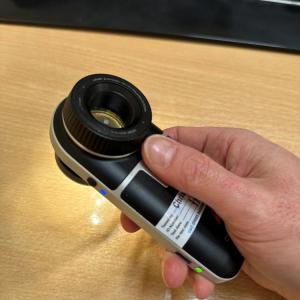You are here
Innovative collaboration between GPs and dermatology specialists helps health systems recover after the Covid pandemic
9 April, 2024

Among the many disruptions caused by the Covid pandemic were delays to people getting treatment: normal services were paused for a while, while many people delayed getting health care after Lockdowns lifted. NHS services struggled to recover and catch up with patient needs. As a result, even now in 2024, many patients are waiting many months to see hospital specialists such as a hospital dermatologist about suspect or unusual skin conditions.
An innovative dermatology dialogue service in Norfolk and Waveney UK tested how hospital care demand might be better managed after the major disruption caused by a crisis like the Covid pandemic. The key strategy was to get patient’s complaints resolved faster. For patients who would otherwise have been referred to the hospital dermatologist, the service used dialogues between GPs and dermatologists to get initial decisions about hospital referral made within 72 hours. Images of suspect skin conditions were sent to the dermatologist who considered the patient history and high resolution images taken by the GP to decide if the patient really needed to see a specialist or could be treated by the GP. An evaluation has found that in about 70% of cases, the patient could be treated by GPs and didn’t need to wait to see the dermatologist. A small percentage of these patients remained on the routine urgency pathway to see the dermatologist and a very small percentage had their status escalated to ‘urgent’ to see the dermatologist within a few weeks.
Waiting lists to see dermatologists in Norfolk and Waveney still grew while this service operated, similar to wait list growth nationally in England, but the lists grew at a much slower rate than waiting lists to see other hospital specialists, in the period April 2021–March 2022 inclusive. Over 3300 patients were enrolled and > 90% of dialogues were resolved within 36 hours. Clinician and patient satisfaction were high. Conditions that frequently caused the referrals that didn’t require seeing the hospital dermatologist were identified and this information was used to educate GPs how to recognise the same conditions in future. Waiting list growth for dermatology patients in the commissioning area was smaller than for other major specialties, and generally smaller than growth for dermatology waiting lists commissioned elsewhere in England. Although a small number of patients were moved to the urgent priority (cancer pathway) waiting list, wait times for people to be seen on the urgent pathway did not rise.
It's hard to know for certain that a dermatology dialogues programme was the only reason that the dermatology wait list in Norfolk and Waveney grew slower than wait lists in the rest of England, but the results are encouraging that technology and intelligent management of health care needs can help health services recover faster after a major crisis like the Covid pandemic. This evaluation study was also a good opportunity for HPRU staff to capitalise on relationships built with local health care providers and public health officials during the Covid pandemic.
The full results from this work are available in this open-access peer-reviewed article.




